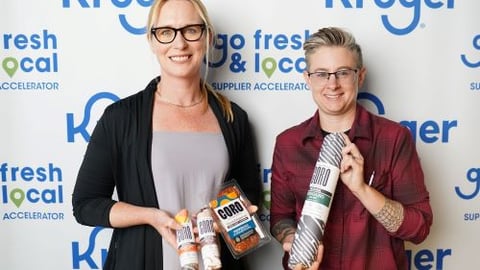Independent Retailers Can Grow With Independent Brands
When reviewing the relationship between emerging brands and various retail channels for our recent global consumer study, “The 2022 Brand Balancing Act” we found that many consumers who buy emerging brands tend to buy them in small, independent brick-and-mortar stores.
Be it availability or an organic local connection, there’s an opportunity for independent grocers to fulfill this want from consumers. A quarter of the respondents in the study said that they buy small brands at independent grocery stores or mini markets, and 37% said that they buy them at street vendors or farmers’ markets. By comparison, more than 32% of consumers said that they buy large brands at mass-merchant stores, and 26% at club stores.
[Read more: "How Corner Stores Are Crucial in Underserved Communities"]
If the study finds that consumers think local and independent when they shop local and independent, there’s a clear opportunity for independent retailers to strengthen that relationship with their shoppers.
For both emerging CPG manufacturers and independent grocers, understanding that their shoppers tend to associate their products with one another can lead to more growth for both parties. And the independent grocery channel is seeing growth. According to the NielsenIQ consumer study, which includes year-over-year omnishopper panel data through May 21, basket totals grew 6% among U.S. independent retail shoppers, compared with a 2.5% growth in basket size at the total U.S. level. The data also shows that store visit frequency is up 3.8 times a week for smaller, independent retailers.
It’s likely no surprise that shoppers of emerging brands buy these products mostly in independent markets. It’s also a reminder of the importance of independent stores and smaller retailers, particularly at a time when many larger stores are merging. The top categories sold in U.S. small, independent stores, per NielsenIQ data, reflect more extensive pantry needs such as tortillas, supplements and milk.
Shifting Focus to Smaller Formats Can Lead to Big Wins
From the point of view of an emerging brand, most manufacturers consider gaining shelf space inside top major retailers as the ultimate prize. Breaking into the assortments and store counts of chains like Walmart, Target and Kroger (now more than ever following the Albertsons merger) can be seen as a business-altering win.
Independent grocers, however, could provide another path to success and should seek out emerging brands to partner with. NielsenIQ found that nearly a quarter of all dollar sales in consumables comes from mid-tier retailers, and that several chains achieve higher dollar sales per store than national chains.
An independent retailer can zero in on data and see how emerging brands — those under $300 million in annual revenue — perform in their stores and competitor stores. For example, they can run a report identifying the emerging brands leading in “velocity growth.” The emerging brand may have a higher price point and less allotted shelf space, but some consumers are willing to pay more, and the emerging brand could be leading in velocity growth, perhaps earning more shelf space.
By staying locally focused and touting products that are sustainable or do good in the community, independent grocers can build a relationship with these fast-growing emerging brands and deliver a local experience that their shoppers will appreciate. This is even more effective during the holidays.
Sizing Up the Holidays for Emerging and Growth Brands
Based on exclusive data from NielsenIQ, and with the holiday season in full swing, there’s a chance for independent retailers to put some of these learnings into practice.
NielsenIQ found that for the latest 52 weeks ending Sept. 25, smaller, emerging and growth brands accounted for 23.7% of all sales. However, looking at the 2021 holiday period, these brands also accounted for 24.2% of sales ($33.88 billion), meaning that they performed better during the holiday season than the entire year.
Compared with the results of each holiday season between 2017 and 2020, where smaller, emerging, and growth brands showed stagnant share, the one-point uptick in 2021 and the growth through September of this year so far bode well for a happy holiday season. Those brands mainly picked up share against more prominent brands in beer, wine, fresh cookies, fresh desserts, salty snacks and candy. That said, they lost share in frozen desserts, frozen seafood and prepared foods.
So what’s different during this year’s holiday season? Independent stores can grow alongside emerging brands by telling a local story. Large brands tend to promote aggressively during the holidays, but emerging brands are increasing their overall market share. Those brands can leverage online promotion to offset large brands’ offline advantage, reaching the right buyers who are most likely to buy small this season.
For independent brands and retailers, ’tis the season to join forces and double down on promotions to gain greater share.






